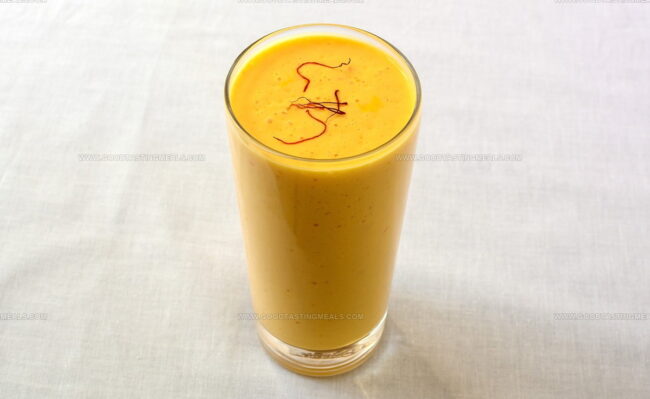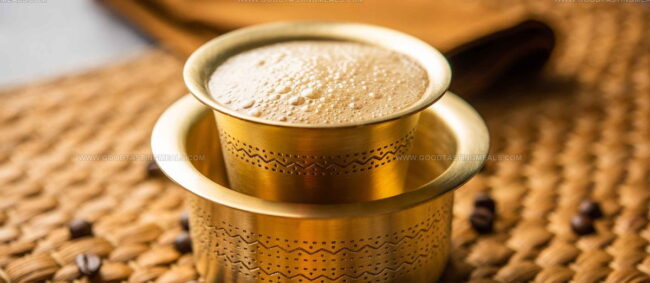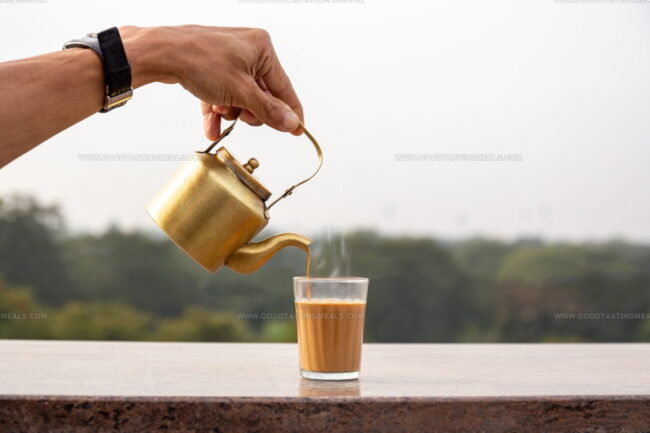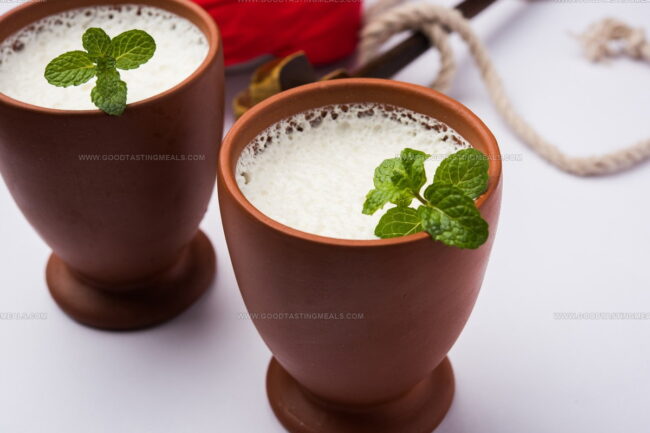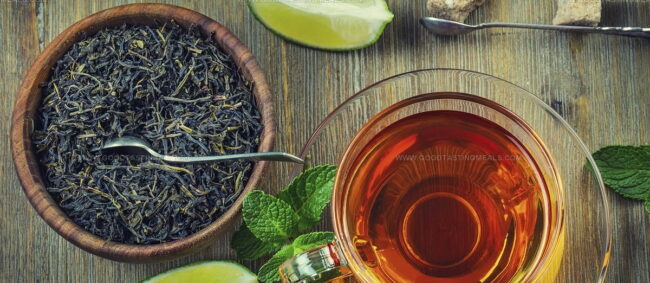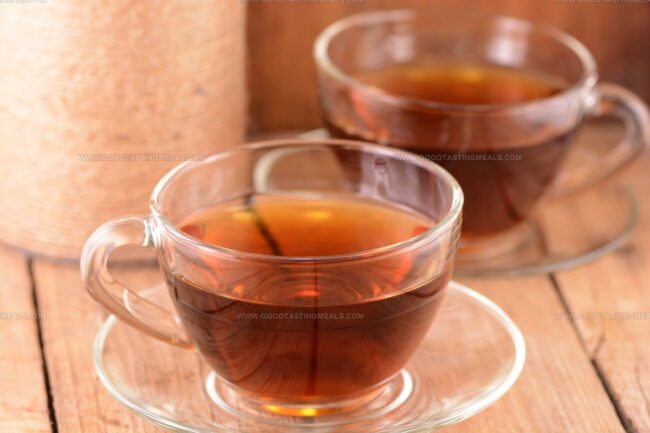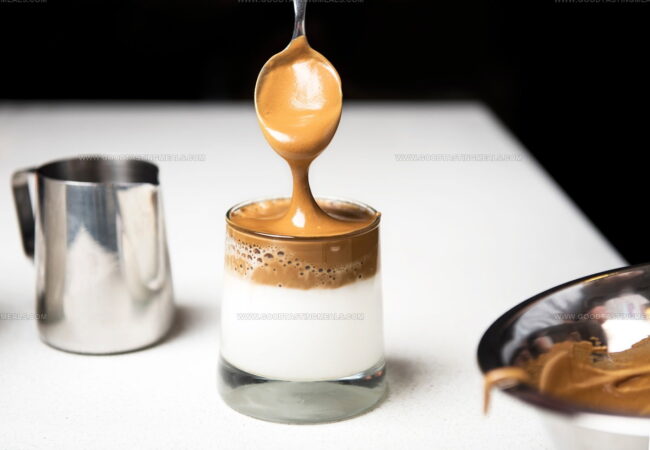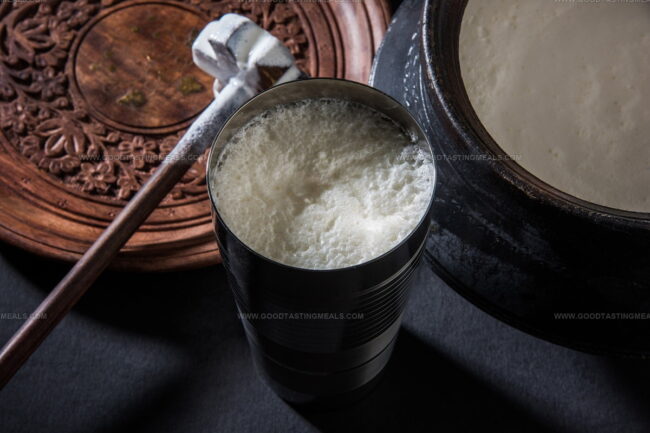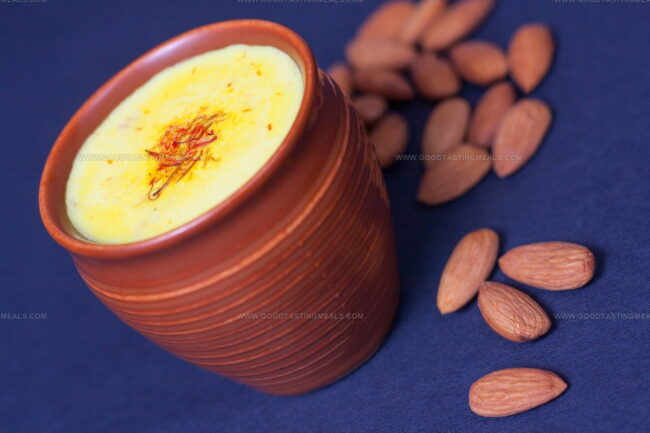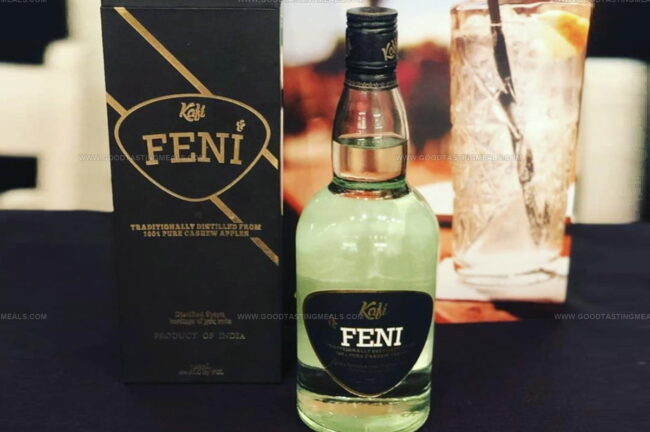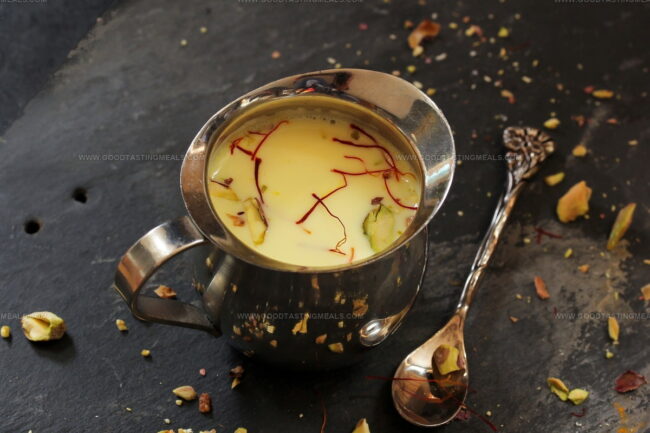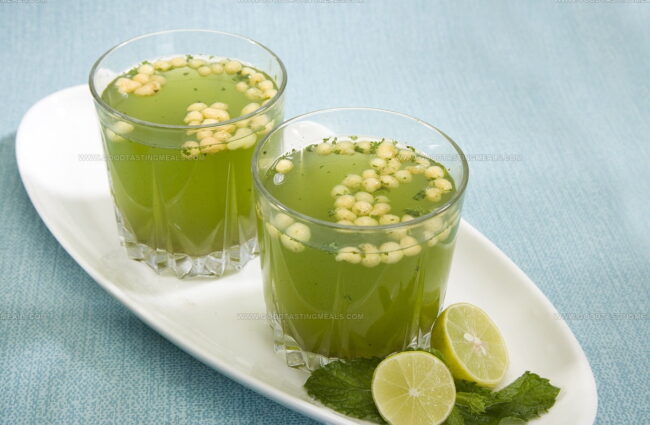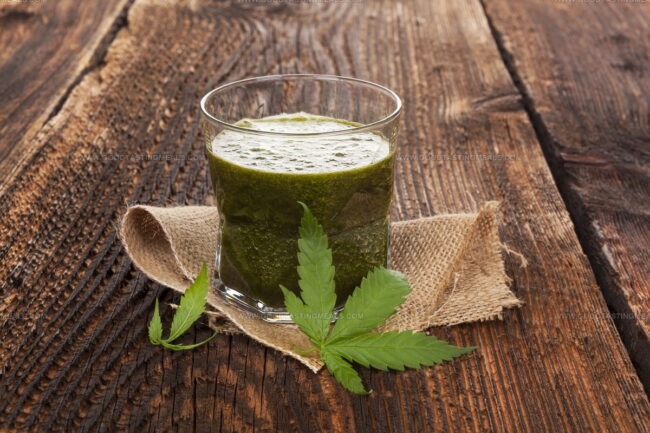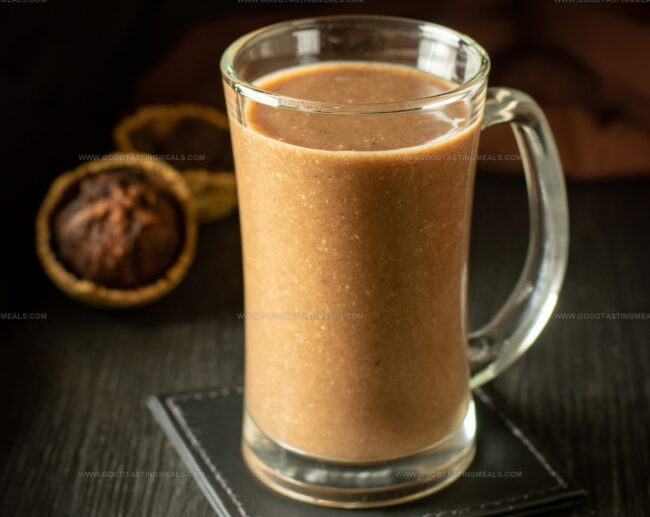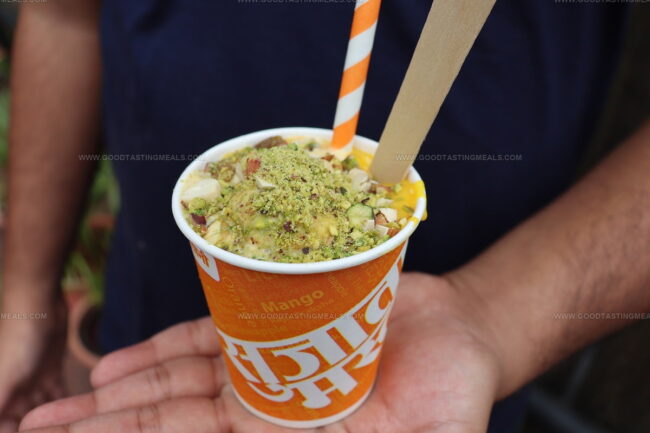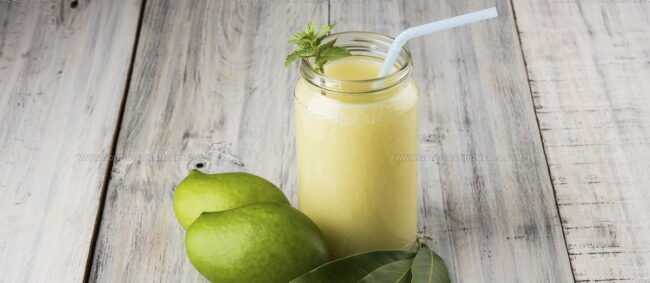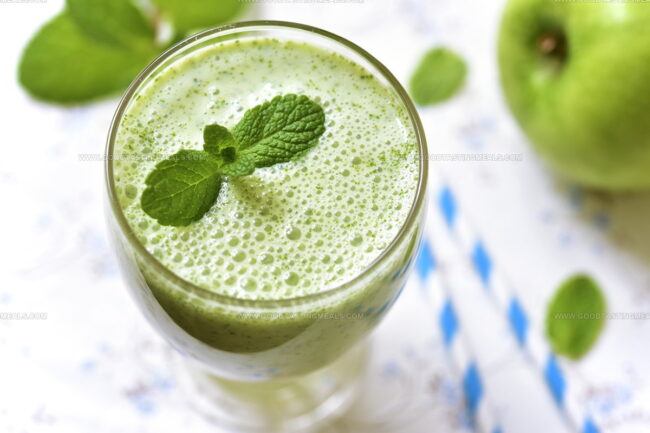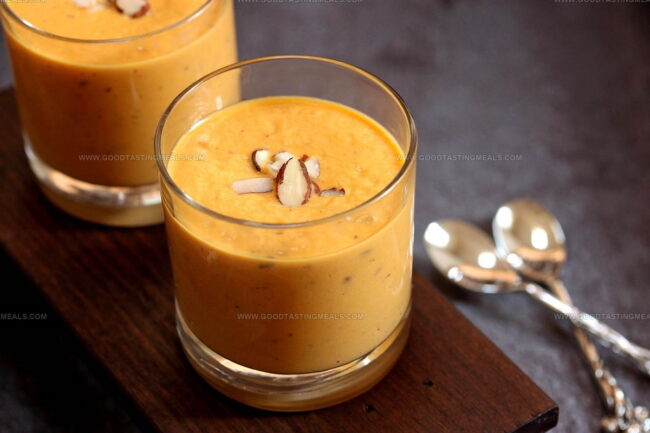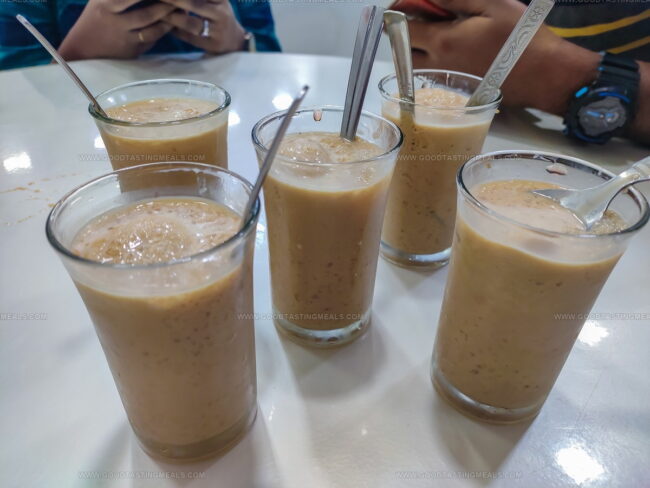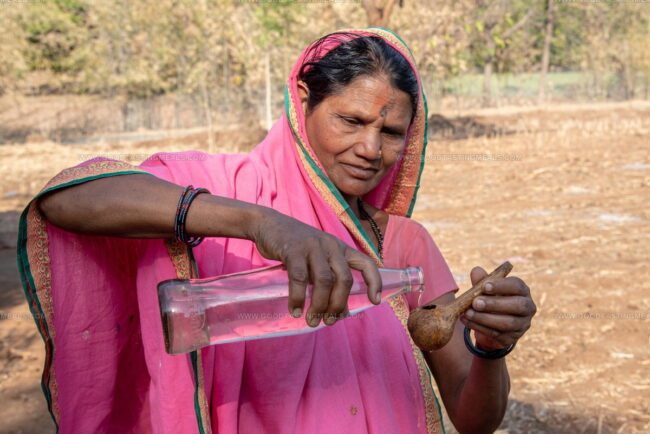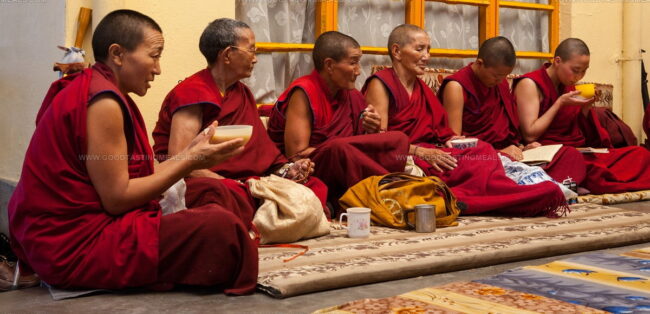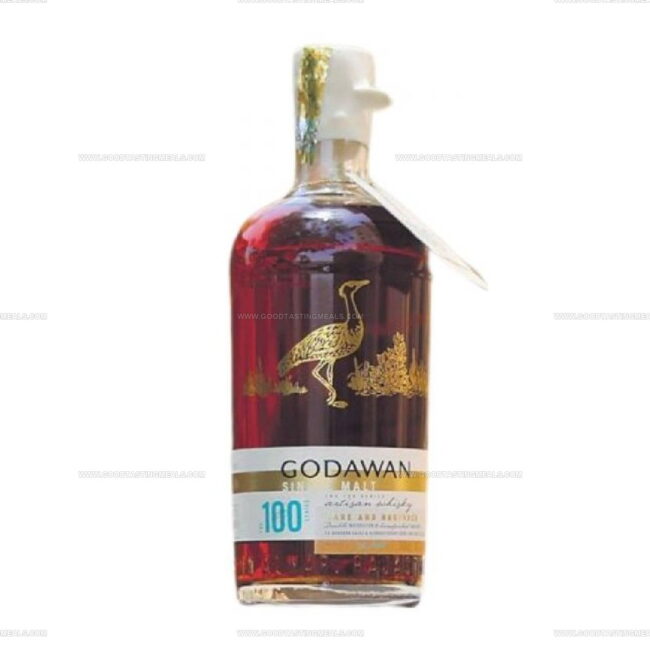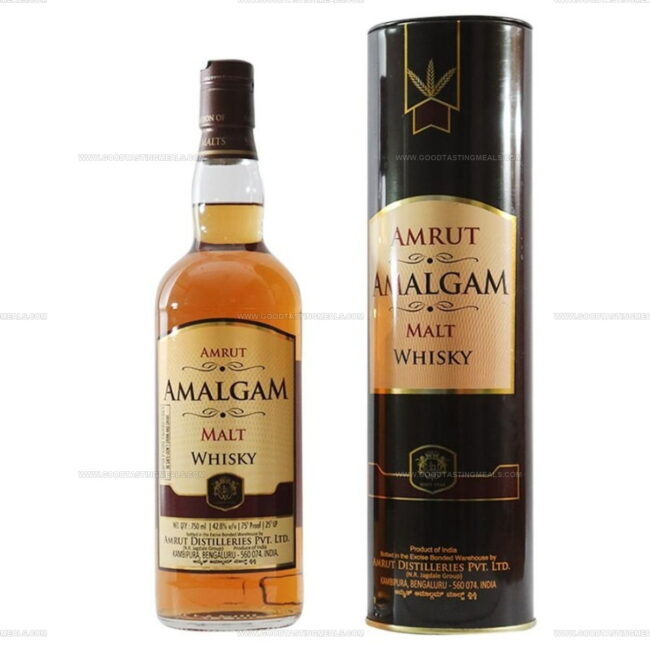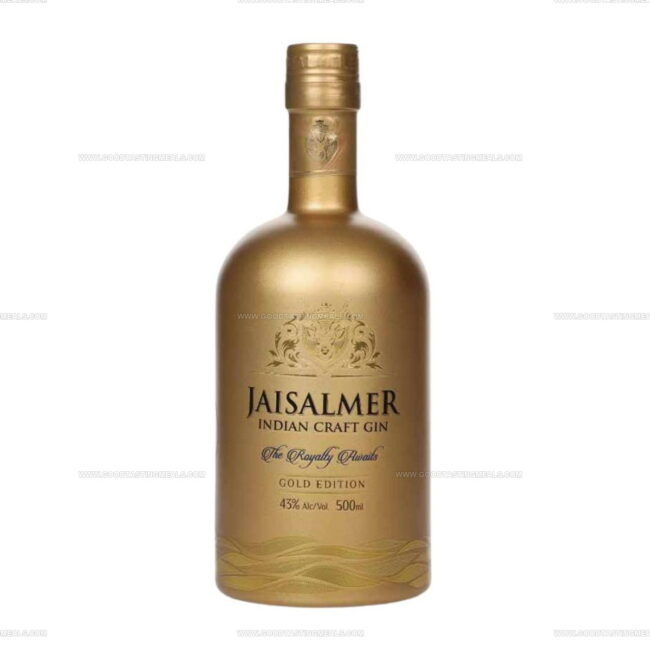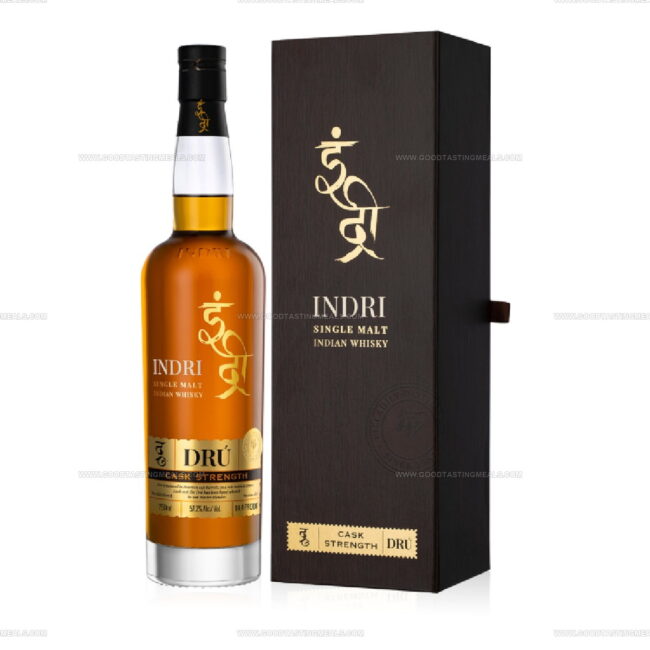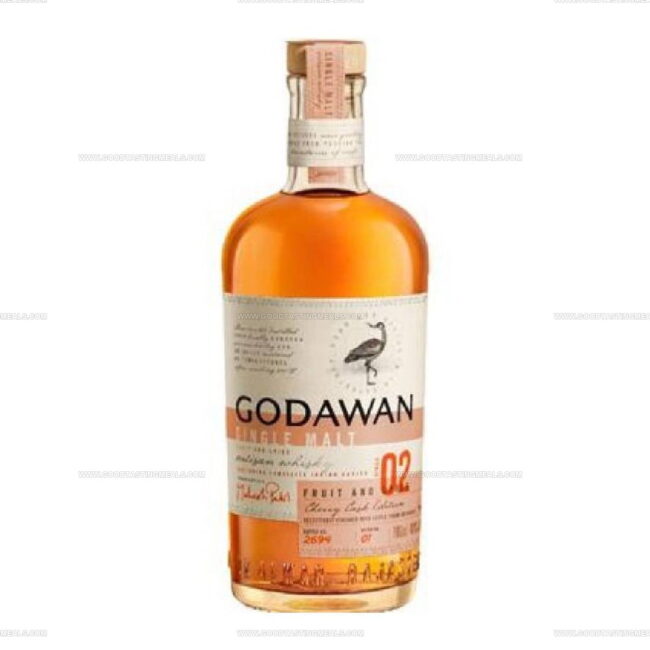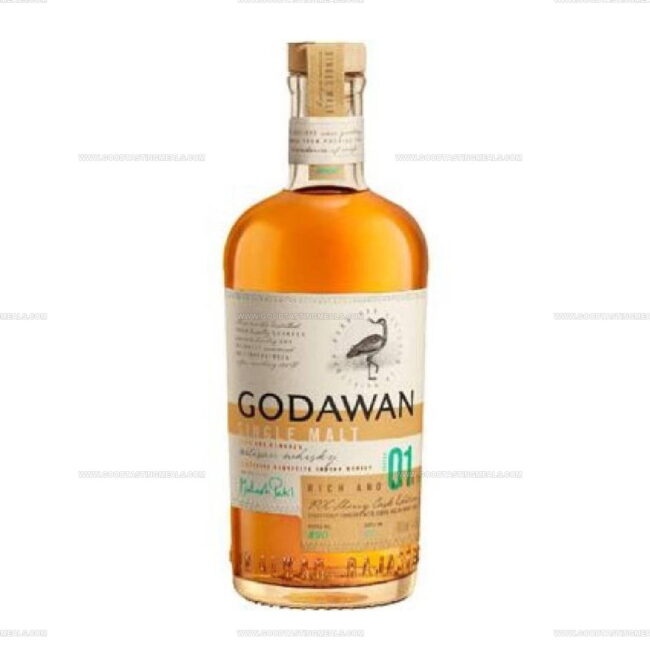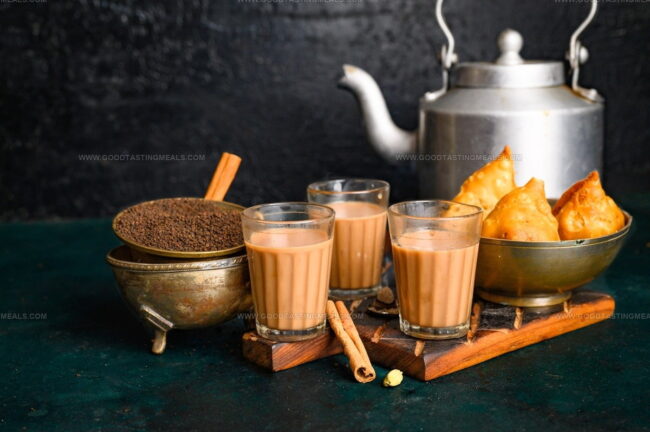38 Flavorful Indian Beverages You Need to Explore
Indian beverages showcase a vibrant culinary landscape that tantalizes taste buds with remarkable diversity and cultural richness.
These liquid treasures represent centuries of traditional brewing techniques and regional creativity.
Ancient techniques and modern innovations merge seamlessly in this fascinating beverage world.
Refreshing concoctions range from cooling summer drinks to warming winter specialties that comfort and energize.
Ingredients like spices, fruits, and herbs transform simple liquids into extraordinary sensory experiences.
Each beverage tells a unique story of local customs, agricultural practices, and familial traditions passed through generations.
Regional variations reflect geographical landscapes, climate conditions, and distinct cultural identities across different states.
You can anticipate an exciting journey through 31 remarkable Indian beverages that promise to surprise and delight your palate: 31 Essential Indian Beverages.
Indian Beverage Types Full of Tradition and Flavor
Spiced chai, cooling lassi, and tangy nimbu pani, India’s drink menu is a celebration in itself. There’s a beverage for every meal, mood, and moment.
Mango Lassi
Mango lassi stands as a refreshing Indian yogurt-based beverage blending ripe mangoes with creamy yogurt for a smooth, sweet drink.
Originating in Punjab, this popular summer refreshment combines fresh mango pulp with chilled yogurt and a hint of cardamom.
Sweet sugar balances the tangy yogurt while water helps create a perfectly smooth consistency.
Restaurants worldwide feature this drink as a staple on Indian menus.
Traditional preparation involves blending ingredients until frothy and creamy.
Cold serving temperature enhances its cooling effect during hot weather.
Cardamom adds a subtle aromatic touch to the drink's flavor profile.
Mango lassi remains a beloved beverage across India and international Indian cuisine scenes.
Indian Filter Coffee
Indian filter coffee blends traditional brewing methods with rich South Indian coffee culture, creating a uniquely intense beverage prized for its deep flavor profile.
Specialized metal filters with two chambers produce this coffee by slowly dripping brewed grounds into a collection vessel.
Ground coffee sits in the upper chamber while hot water passes through, extracting maximum flavor and depth.
Baristas often pour the coffee between a tumbler and saucer to create a distinctive frothy texture and aeration.
Milk and sugar are standard additions that transform the pure coffee into a creamy, sweet drink.
Regional variations across South India highlight subtle differences in preparation techniques.
Karnataka and Tamil Nadu particularly celebrate this coffee preparation method.
Coffee lovers recognize this brewing style as a cornerstone of South Indian beverage traditions.
Chai Masala
Chai masala emerges as India's signature spiced tea blending robust black tea with creamy milk and a complex spice blend of cardamom, ginger, cloves, cinnamon, and black peppercorns.
British colonial traders sparked its widespread popularity during the 19th century while seeking alternative tea markets beyond Chinese control.
Regional variations distinguish chai recipes through unique spice combinations and preparation methods.
Traditional preparation involves brewing tea leaves with milk and ground spices to create a warming, aromatic beverage.
Street vendors and households across India craft chai using time-honored techniques passed through generations.
Steep times and spice ratios dramatically influence chai's distinctive flavor profile.
Masala chai serves as more than a drink—it represents social connection and hospitality.
Modern interpretations now include global adaptations in cafes worldwide.
Sweet Lassi (Meethi Lassi)
Sweet lassi dominates Indian beverage culture as a cooling yogurt-based drink blending sugar, dairy, and aromatic spices.
Punjab originated this refreshing beverage which combines creamy yogurt with precise sugar balance and optional fruit or flavor enhancements like saffron or cardamom.
Traditional preparation involves mixing ingredients in clay pots and topping with thick cream (malai) and slivered nuts.
Summer heat amplifies its popularity as a post-meal drink or standalone refreshment.
Mango lassi has recently emerged as a crowd favorite among multiple sweet lassi variations.
Regional differences influence specific ingredient proportions and garnishing styles.
Clay pot preparation maintains its cultural authenticity.
Smooth texture and balanced sweetness define its widespread appeal across India.
Lassi
Lassi represents a traditional Punjab dairy beverage blending yogurt, sugar, and occasional herbs that originated from farmer preservation techniques before refrigeration.
Sweet varieties called metha lassi incorporate ginger, mint, rosewater, cardamom, and exotic fruits like mango.
Indians craft this refreshing drink to accompany spicy dishes and cool bodies during intense summer temperatures.
Clay pot storage methods helped farmers maintain milk quality and create this smooth, chilled beverage.
Farmers initially mixed milk with curd and sugar as a practical preservation strategy.
Spices and herbs enhance lassi's complex flavor profile.
Ice helps moderate the drink's temperature and provide additional refreshment.
Multiple flavor variations allow customization for different taste preferences.
Darjeeling
Darjeeling tea emerges from West Bengal's historic tea-growing region, carefully cultivated since British explorer Arthur Campbell's pioneering experiments in the 19th century.
Named after its mountainous origin city, this premium tea became globally recognized through Campbell's innovative agricultural efforts.
Sophisticated tea enthusiasts prize Darjeeling for its unique muscatel flavor and delicate aroma, distinguishing it from other Indian tea varieties.
Campbell's initial garden experiments led to establishing the Darjeeling Company in 1864, which later transformed into Darjeeling Consolidated Tea Company.
Located near Tibet's trading routes, Darjeeling's high-altitude terrain provides ideal growing conditions for exceptional tea leaves.
British colonial infrastructure significantly supported tea production's expansion in this region.
Mountain slopes and specific climate characteristics contribute to the tea's distinctive taste profile.
Nimbu Pani
Nimbu pani stands as India's most beloved summer quencher, blending zesty lemon juice with spices and salt into a single cooling beverage.
This traditional drink originated in North India as a simple yet powerful thirst-killer designed to combat extreme heat.
Salt and cumin form its signature base, while optional ingredients like jaggery, ginger, and pepper create regional flavor variations.
Black salt (kala namak) adds a distinctive mineral tang that sets nimbu pani apart from standard lemonade.
Soda or still water serves as the liquid foundation for this refreshing mixture.
Households and street vendors prepare the drink with freshly squeezed citrus and a blend of personal spice preferences.
Summer temperatures make nimbu pani an essential hydration solution across Indian states.
Regional adaptations ensure no two versions taste exactly alike, reflecting local ingredient availability and taste preferences.
Gin And Tonic
Gin and Tonic is a refreshing highball cocktail originating from British colonial India as a malaria prevention method using quinine-rich tonic water.
British officers first introduced this simple drink in the early 19th century, mixing gin with tonic water over ice and garnishing with a lime wheel.
Summer enthusiasts worldwide adore its crisp, bitter flavor profile and easy preparation.
Gin to tonic water ratios typically range between 1:1 and 1:3, allowing for personal taste adjustments.
Different regions use various names like Gin Tonic or G & T. International bartenders often customize the cocktail with unique gin selections and garnishes.
Global popularity stems from its straightforward recipe and refreshing qualities.
Variations continue to emerge, making this classic drink a timeless beverage choice.
Assam Tea (Asam Chai)
Assam tea represents a robust black tea originating from India's northeastern region, characterized by its distinctive malty and earthy flavor profile that sets it apart from other global tea varieties.
Grown exclusively in Assam state, this tea derives from the Camellia sinensis var.
assamica plant with unique characteristics that distinguish its taste and quality.
Harvesting periods significantly influence the tea's final flavor, with first-harvest teas featuring lighter, fruit-forward notes and subsequent harvests producing fuller-bodied, more intense brews.
Historically considered a mass-produced beverage, Assam tea now includes artisanal high-quality variants that showcase its complex flavor potential.
Specialized tea makers carefully process these leaves to preserve their natural richness and depth.
Brewing methods and steeping times can further enhance the tea's inherent qualities.
Global tea enthusiasts prize Assam tea for its bold taste and rich cultural heritage.
Regions surrounding the Brahmaputra River provide ideal growing conditions for this exceptional tea variety.
Phenti Hui
Dalgona is a visually striking whipped coffee that transforms instant coffee, sugar, and water into a caramel-colored foam topping for milk.
South Korean actor Jung Il-woo popularized this beverage after encountering a similar drink in Macau, naming it after a local street candy with matching sweet characteristics.
Asian countries share variations of this frothy coffee preparation method, which involves whisking equal parts instant coffee, sugar, and water until achieving a light, creamy texture.
Traditionally served by ladling the whipped mixture over cold or hot milk, dalgona creates an Instagram-worthy beverage that balances rich coffee intensity with smooth milk base.
Social media platforms helped spread its global popularity during the COVID-19 pandemic, when home cooking trends surged.
International coffee enthusiasts quickly adopted this simple yet impressive drink as a quarantine-era sensation.
Minimal ingredients and straightforward preparation make dalgona an accessible treat for coffee lovers worldwide.
Visual appeal and unique texture distinguish this beverage from standard coffee preparations.
Salted Lassi (Namkeen Lassi)
Salted lassi represents a cooling North Indian yogurt-based beverage crafted with tangy dahi, roasted cumin powder, and a pinch of salt.
Originating in Punjab, this refreshing drink balances rich spices with smooth yogurt's creamy texture.
Traditional recipes blend yogurt, water, and ground cumin into a frothy mixture that quenches thirst during hot summer months.
Restaurants and street vendors across India serve this popular beverage as a perfect companion to spicy meals.
Himalayan regions often add extra pepper or mint for enhanced flavor complexity.
Nutritionists praise its probiotic qualities and digestive benefits.
Travelers frequently enjoy salted lassi as an authentic Indian refreshment.
Variations include adding black salt or garnishing with fresh herbs for extra zest.
Badam Doodh
Badam doodh illuminates Indian beverage traditions as a luxurious almond milk drink blending ground almonds with warm, sweetened milk.
Originating in South Asian culinary landscapes, this creamy elixir delivers rich nutritional benefits and complex flavor profiles.
Cardamom and saffron frequently enhance its aromatic essence, introducing layers of exotic spice complexity.
Rosewater sometimes complements the beverage, adding delicate floral undertones.
Traditional preparation involves carefully grinding almonds into a smooth paste before mixing with heated milk.
Sugar provides balanced sweetness, transforming simple ingredients into a comforting drink.
Nutritionists praise its protein and mineral content, making it more than just a tasty beverage.
Families across India enjoy badam doodh during celebrations and quiet evening moments, celebrating its cultural significance.
Feni
Feni is a potent Indian spirit distilled from fermented cashew fruit, uniquely capturing Goa's distinctive alcohol production.
Awarded Geographical Indication status, this powerful liquor represents traditional Indian distillation techniques.
Crafted through second or third distillation processes, feni delivers complex flavor profiles ranging from sharp to smooth.
Two primary varieties exist: cashew and coconut palm toddy fermentation styles.
Goan artisans carefully extract juice from ripe cashew fruits before fermenting and distilling the liquid.
Regional production methods ensure authentic quality and taste characteristics.
Alcohol content typically ranges between 40-45 percent, making it strong and memorable.
Locals and travelers often enjoy feni as a standalone drink or mixed in cocktails.
Thandai
Thandai is a refreshing North Indian milk drink blending creamy richness with complex spice layers from almonds, cashews, and aromatic seeds like fennel and poppy.
Saffron and rose water enhance its luxurious flavor profile, creating a sophisticated beverage deeply rooted in Indian culinary traditions.
Traditional preparation involves grinding nuts and spices into a thick paste, then mixing with chilled milk and sugar for a smooth, cooling texture.
Cardamom and peppercorns add subtle warmth and depth to the drink's intricate taste.
Sugar balances the spices, while saffron threads provide a golden hue and delicate fragrance.
Rose water introduces a gentle floral note that complements the nutty base.
Garnished with slivered nuts, thandai offers a multi-dimensional sensory experience.
Summer celebrations and festivals like Holi often feature this iconic Indian drink as a cooling, festive refreshment.
Haldi Doodh
Haldi doodh is a traditional Indian wellness drink celebrated for its potent anti-inflammatory and immune-boosting properties.
Golden turmeric transforms warm milk into a healing elixir rich with medicinal benefits stemming from ancient Ayurvedic practices.
Indian families have long consumed this beverage to combat seasonal illnesses and support overall health.
Pure turmeric powder mixed with heated milk creates the base of this comforting drink.
Warming spices like cardamom, ginger, and black pepper enhance its therapeutic profile.
Sweet honey often balances turmeric's earthy flavor and adds natural sweetness.
Optional ingredients such as coconut oil can improve turmeric absorption.
Cold winter months particularly inspire this nourishing golden beverage that connects generations through its simple yet powerful recipe.
Jal Jeera
Jal jeera are cooling Indian beverages packed with complex spice blends that instantly refresh tired senses.
Cumin seeds, coriander leaves, mint, salt, and pepper create its signature zesty base flavor profile.
Dried mango powder, citrus zest, ginger, and tamarind pulp add unexpected depth to this traditional drink.
Ingredients get ground into a concentrated paste before mixing with chilled water.
Boondi, small crispy fried gram flour balls, often garnish the top for extra texture.
Street vendors and home kitchens across northern India frequently prepare this thirst-quenching drink.
Summer heat makes jal jeera especially popular among locals seeking instant relief.
Nutritionists praise its digestive and cooling properties as much as its vibrant taste.
Bhang Lassi
Bhang lassi is a traditional cannabis-infused yogurt drink steeped in Indian spiritual and cultural traditions.
Religious monks and holy men historically consume this potent beverage during meditation and significant festivals like Holi and Shivratri.
Cannabis leaves are crushed into a paste and blended with yogurt, creating a unique psychoactive beverage with deep mythological roots.
Hindu legends claim the drink saved Lord Shiva after he consumed poison, adding mystical significance to its preparation.
Ancient Indian communities in Rajasthan and Uttar Pradesh popularized bhang lassi, especially during the 1970s.
Many people believe the drink possesses medicinal properties and use it as a folk remedy.
However, consuming bhang lassi can potentially cause serious psychological effects like hallucinations and psychosis.
Individuals should purchase this beverage only from licensed shops with extreme caution.
Sulaimani Tea (Sulaimani Chai)
Sulaimani chai is a spiced black tea originating from Kerala, India, and Middle Eastern regions that blends simplicity with remarkable health benefits.
Brewed with water and black tea, this beverage gains complexity from lemon juice, sugar or honey, and optional spices like cardamom, cloves, cinnamon, or black pepper.
Arabic in origin, Sulaimani derives its name from cultural traditions deeply rooted in Muslim cuisine along the Malabar coast.
Muslims traditionally serve this tea after meals as a digestive aid, appreciating its therapeutic qualities.
Health-conscious individuals value its potential to improve digestion, enhance mood, and support bodily detoxification.
Lemon's addition not only elevates flavor but increases vitamin C content.
Versatile in preparation, Sulaimani reflects personal taste preferences through subtle spice variations.
Each cup offers a balanced, refreshing experience connecting cultural heritage with wellness.
Bel Sherbet
Bel sherbetis a cooling Indian drink crafted from wood apple, a native fruit with a distinctive thick orange pulp and tough exterior shell.
Packed with medicinal properties, this traditional beverage offers remarkable health benefits for digestion and hydration.
Ripe wood apples are carefully scooped out and blended with water, sugar, and sometimes milk to create a smooth, sweet liquid.
Rural communities in India have long enjoyed this natural drink during hot summer months.
Residents prepare the sherbet by removing the hard rind and extracting the soft inner pulp.
Sugar helps balance the fruit's tangy flavor profile while enhancing its refreshing qualities.
Nutritionists recommend the drink for its rich vitamin and mineral content.
Travelers and locals alike appreciate bel sherbet as a natural and cooling beverage that quenches thirst and provides essential nutrients.
Mango Mastani
Mango mastani represents a luxurious milkshake-style drink originating from Pune, Maharashtra, combining ripe mangoes with chilled milk into a rich, creamy beverage.
Maharashtra's beloved summer refreshment features fresh mango pulp blended smoothly with thick milk and often crowned with a generous ice cream scoop.
Slivered nuts like almonds or pistachios provide delightful crunch and textural contrast to the smooth mixture.
Restaurants and street vendors across Pune typically serve this drink in tall glasses, making it a visually appealing treat.
Mango mastani delivers intense mango flavor with a cool, sweet profile perfect for hot Indian summers.
Street food culture in Pune helped popularize this drink among locals and tourists.
Home cooks can easily replicate the recipe using fresh mangoes or quality mango puree.
Traditional preparation involves blending ingredients until smooth and garnishing with nuts and ice cream.
Aam Panna
Aam panna stands as a cooling summer elixir from Northern India, transforming ripe mangoes into a tangy green beverage that quenches thirst and beats intense heat.
Raw green mangoes get boiled and blended with mint, sugar, and roasted cumin seeds to create its signature zesty profile.
Salt and water help balance the drink's sharp flavors and enhance its refreshing qualities.
Traditionally served chilled, this traditional drink provides instant relief during scorching summer months.
Nutritionists praise its digestive benefits and electrolyte-restoring properties.
Mango's natural sweetness combines perfectly with spicy cumin undertones.
Indian households prepare this drink as a natural remedy for heat exhaustion.
Simple ingredients and quick preparation make aam panna a beloved seasonal favorite across multiple regions.
Arrack
Arrack represents a diverse family of distilled spirits originating in East India with roots tracing back to the 15th century.
Crafted primarily in India, Sri Lanka, Indonesia, and the Philippines, this alcoholic beverage emerges from fermented ingredients like coconut palm juice or molasses.
Ceylon arrack, distilled from coconut palm, and Batavian arrack, derived from molasses, stand as the most prominent varieties.
Researchers believe Arabic or Chinese distillation techniques influenced its initial production methods.
Each regional variation carries unique flavor profiles and characteristics depending on base ingredients.
Distillation processes and local traditions shape arrack's complex taste and cultural significance.
Historical evidence suggests its development emerged through cross-cultural trading interactions across Asian maritime routes.
Whisky Mac
Whisky Mac is a bold Scottish cocktail blending robust blended scotch whisky with sweet ginger wine, creating a warming and spirited drink with rich historical roots.
British colonial soldier Colonel Hector MacDonald reportedly invented this spicy libation during his service in India, explaining the "Mac" component of its name.
Classic preparation involves pouring both ingredients over ice in a rocks glass and gently stirring to combine the spirits.
Ginger wine adds a distinctive sweet-spicy kick that balances the whisky's smoky undertones.
Highland and Speyside scotch whiskies work best for authentic flavor profiles.
Scottish bars and pubs frequently serve this drink as a standard winter warmer.
International bartenders recognize it as a simple yet sophisticated cocktail.
Cold weather and fireside settings enhance its traditional charm.
Noon Chai
Noon chai represents a distinctive Kashmiri pink tea brewed with green tea leaves, salt, and baking soda to create its signature rosy color.
Salt transforms this beverage into a savory tea experience unlike traditional sweet tea preparations.
Kashmir's signature drink typically includes optional milk and sometimes crushed nuts or dried fruit for added complexity.
Green tea serves as noon chai's foundational ingredient, carefully prepared through a specific brewing technique.
Baking soda plays a critical role in developing the tea's unique pink hue and slightly alkaline flavor profile.
Kashmir's cultural heritage influences this tea's preparation and consumption, making it more than just a beverage.
Regional variations exist across areas with significant Kashmiri populations, reflecting the drink's widespread appeal.
Milk can soften noon chai's robust flavor, creating a smooth and warming drink enjoyed throughout colder seasons.
Mint Lassi
Mint lassi stands out as a cooling Indian yogurt-based beverage brimming with fresh mint's invigorating essence.
This classic drink blends smooth yogurt with vibrant mint leaves for an instantly refreshing experience.
Originating in North India, mint lassi offers a savory alternative to sweet lassi variations.
Salt enhances the drink's complex flavor profile, while optional spices like cumin or black pepper add depth.
Cilantro sometimes joins the mint for extra herbal complexity.
Traditional preparation involves whisking yogurt with finely chopped mint and precise salt measurements.
Street vendors and home kitchens across India frequently serve this thirst-quenching beverage.
Summer heat makes mint lassi an especially welcome beverage that instantly cools and satisfies.
Gajar Ka Doodh
Gajar ka halwa are traditional Indian desserts melting with rich, sweet carrot pudding perfected through generations of family cooking traditions.
Sweet orange carrots slowly simmer in milk and ghee until they transform into a creamy, dense mixture concentrated with natural sugars.
Cardamom and nutmeg spices enhance the dessert's warm aromatic profile, while crushed nuts like almonds and pistachios provide delightful textural contrast.
Regional variations include different cooking methods ranging from puréeing carrots first to grating and cooking them directly in milk.
Winter seasons highlight this dessert's popularity across northern Indian households.
Some families garnish their halwa with additional chopped nuts and silver leaf decorations.
Homemade versions often require patient slow-cooking to develop complex flavors.
Sugar and condensed milk can intensify the dessert's sweetness depending on personal preferences.
Jigarthanda
Jigarthandais a cooling milk-based dessert drink originating from Madurai, known for its unique blend of almond gum, nannari syrup, and milk-based ice cream.
Street vendors across Tamil Nadu craft this refreshing beverage by mixing sarsaparilla root syrup, evaporated milk, and sugar with either almond gum or agar-agar.
Ice cream made from milk crowns the chilled concoction, creating a sweet and creamy texture that offers instant relief from South Indian heat.
Preparation requires careful ingredient selection and precise mixing techniques passed down through generations.
Traditional sellers use pushcarts and street stalls to serve this popular drink.
Summer crowds flock to these vendors seeking the signature Madurai cooler.
Regional variations exist, with some recipes incorporating additional ingredients.
Each glass represents a delicious piece of Tamil Nadu's street food culture.
Mahua
Mahua spirits represent an indigenous alcoholic beverage distilled from Madhuca longifolia flowers by Adivasi communities in Central India.
Indigenous tribes carefully ferment dried mahua flowers with sugar to create a clear liquor ranging from mild 5% to strong 25% alcohol content.
Government restrictions historically limited production and distribution of this traditional drink.
Small-scale production continues among rural communities who maintain cultural connections through this unique spirit.
Rural artisans preserve ancient fermentation techniques passed through generations.
Traditional preparation methods vary between different tribal groups.
Alcohol strength depends on specific fermentation processes and ingredient ratios.
Regional variations reflect local brewing traditions and cultural practices.
Khar
Khar water stands as a distinctive alkaline solution central to Assamese culinary traditions, crafted by burning sun-dried banana peels from the specific "bhim kol" variety.
Chefs transform these peels into ash through careful burning, then filter the ash-water mixture to create a clear, alkaline liquid with a unique flavor profile.
This special water serves as a fundamental ingredient in numerous traditional Assamese dishes, adding a characteristic tangy and slightly alkaline taste.
Banana peels from the "bhim kol" type are specifically selected for their optimal ash-producing qualities.
Rich in mineral content, khar water provides a signature taste that differentiates Assamese cuisine from other regional cooking styles.
Indigenous Assamese families have practiced this water-making technique for generations, passing down the method through traditional cooking practices.
Regional recipes often feature khar water as a critical component, highlighting its importance in creating authentic flavor profiles.
Researchers consider this water preparation method a remarkable example of sustainable and resourceful culinary innovation in Northeast India.
Ookali
Ookali blends healing warmth with traditional Indian wellness, offering a potent herbal beverage from Western India's rich culinary landscape.
Coriander seeds form this hot drink's core ingredient, carefully boiled to extract maximum medicinal properties.
Indians traditionally prepare ookali during cold seasons as a natural remedy for various health challenges.
Western Indian families pass down generations-old techniques for brewing this therapeutic drink.
Native preparation involves precise roasting and boiling of dried coriander seeds, releasing their distinctive aromatic essence.
Health practitioners recommend ookali for supporting digestive functions and boosting overall immunity.
Traditional medicine considers the drink an effective method for managing respiratory issues and internal inflammation.
Wellness experts praise ookali's simple yet powerful approach to natural healing through carefully selected botanical ingredients.
Kangra Tea
Kangra tea represents a rare mountain-grown brew originating from small family gardens nestled between India, Kashmir, and China's Himalayan border regions.
Tea cultivators carefully harvest this green or black tea variety using traditional methods passed through generations.
Mountain altitude and unique soil conditions contribute to its distinctive flavor profile.
Steep mountain slopes provide ideal growing environments with limited production quantities.
British colonial tea experts initially recognized this tea's exceptional quality during 19th-century explorations.
Regional farmers meticulously select tea leaves by hand, ensuring premium quality and authentic taste.
Blending techniques transform these leaves into classic Kashmiri chai preparations.
International tea connoisseurs increasingly seek Kangra tea for its complex and nuanced characteristics.
The Producers Defining India’s Beverage Scene
From rural dairies to bustling city brands, India’s beverage producers blend heritage with invention. Discover the makers behind your next favorite drink.
Godawan
Godawan single malt whisky originates from Rajasthan, India, celebrating the endangered Great Indian Bustard through its distinctive craft spirit.
Diageo India carefully distills this premium whisky using innovative techniques and local ingredients unique to India's desert landscape.
United Spirits Limited, established in 1826, produces Godawan as part of its strategic focus on high-quality alcoholic beverages.
Bengaluru-based Diageo India crafts this whisky with deep respect for Rajasthan's cultural heritage and environmental conservation.
Whisky enthusiasts recognize Godawan for its smooth complexity and connection to regional biodiversity.
Company leaders have strategically developed this product to showcase India's emerging craft spirits market.
Modern distillation methods blend traditional techniques with contemporary production standards.
Godawan represents a sophisticated expression of Rajasthan's natural environment and cultural storytelling.
Amrut Distilleries
Amrut Distilleries are an innovative spirits producer revolutionizing Indian whisky on the global stage.
Founded in 1948 in Bengaluru, Karnataka, Amrut pioneered India's first single malt whisky in 2004, marking a significant milestone in international spirits production.
Local six-row barley forms the core ingredient for their distinctive spirits, which showcase traditional distillation techniques.
Amrut crafts a diverse portfolio including single malts, rum, brandy, and blended whiskies that have earned widespread international acclaim.
Their meticulous production process reflects a commitment to quality and innovation.
Sophisticated whisky enthusiasts worldwide now recognize Amrut as a premier Indian spirits brand.
Strategic sourcing and expert craftsmanship distinguish their products from traditional competitors.
Global awards and recognition underscore Amrut's exceptional reputation in the competitive spirits market.
Radico Khaitan
Radico Khaitan Limited represents a pioneering force in India's spirits manufacturing landscape, transforming from a bulk spirits supplier to a leading Indian Made Foreign Liquor (IMFL) producer since its 1943 establishment.
Guided by Dr.
Lalit Khaitan as Chairman and Abhishek Khaitan as Managing Director, the company has strategically evolved through consistent innovation and consumer-focused research.
Company leadership has prioritized understanding market dynamics and developing sophisticated product strategies that distinguish Radico Khaitan in the competitive spirits industry.
Strategic investments in research and development have enabled the organization to expand its product portfolio and market presence across India.
Key leadership decisions have driven the company's growth from a regional distillery to a national spirits manufacturer with significant market influence.
Radico Khaitan continues to demonstrate commitment to quality production and responsive business practices in the Indian liquor sector.
Advanced manufacturing capabilities and forward-thinking management have positioned the company as a significant player in India's spirits marketplace.
Indri
Indri whisky represents premium Indian single malt crafted in Haryana's distillery with sophisticated complexity.
Piccadily Distilleries carefully selects six-row barley from Rajasthan to produce this exceptional spirit.
Unique maturation in three distinct casks - ex-bourbon, ex-French wine, and ex-Pedro Ximenez sherry - creates remarkable depth and nuanced flavor layers.
Copper pot stills ensure traditional distillation techniques preserve authentic whisky character.
Experts recognize Indri-Trini as a groundbreaking expression of Indian whisky craftsmanship.
Sophisticated drinkers appreciate its intricate taste profile combining multiple international wood influences.
Rich amber color signals exceptional quality and careful aging process.
Global whisky enthusiasts consider Indri a significant milestone in India's emerging spirits market.
Indian Beverages That Belong on Your Must-Try List
Sipping your way through India is a treat for the senses. These drinks invite you to enjoy every spice, fruit, and tradition the country has to offer.
Godawan Godawan Century
Godawan Century is an exclusive single malt whisky crafted in India to commemorate a critically endangered bird species and showcase remarkable distilling expertise.
Diageo India released this limited edition with only 100 bottles to celebrate their brand's first anniversary and raise awareness about conservation.
Winning Best Single Malt Whisky at the London Spirits Competition 2024 with 96 points underscores its exceptional quality and international recognition.
Judges praised its light body and complex flavor profile featuring pronounced tropical notes and a nuanced taste spectrum.
Sweet caramel and charcoal undertones blend seamlessly with hints of cinnamon and anise.
Sophisticated whisky enthusiasts appreciate its distinctive character and refined complexity.
Each bottle represents a unique intersection of artisanal craftsmanship and environmental consciousness.
Godawan Century embodies a sophisticated narrative of wildlife preservation and premium spirits production.
Godawan Godawan Fruit and Spice
Godawan Single Malt Fruit and Spice represents a sophisticated whisky innovation from Rajasthan, India, crafted by Diageo India with exceptional botanical complexity.
Series 02 matures in unique cherry wood casks and finishes in barrels infused with exotic Indian spices, creating a distinctive sensory experience.
Whisky Advocate highlights its intricate aroma profile featuring stone fruits, orchard essences, and floral undertones like orange blossom and kumquat.
Creamy nutmeg and cinnamon undertones complement its nuanced flavor spectrum.
Raspberry, watermelon, and cherry notes dance across the palate with spiced candy accents.
Apple, pear, yellow plum, and red gooseberry add depth to its sophisticated character.
Each sip reveals layered botanical expressions rooted in Rajasthan's rich terroir.
Smooth textures and balanced spice notes define this artisanal Indian whisky's remarkable sensory journey.
Godawan Godawan Rich and Rounded
Godawan Single Malt Rich and Rounded emerges as a distinctive Indian whisky crafted in Rajasthan, showcasing innovative maturation techniques through Pedro Ximenez sherry casks and unique Indian botanical barrels.
Diageo India developed this exceptional whisky with complex flavor profiles featuring pronounced aromas of dried fruits, cherries, and licorice.
Exotic botanicals like Rasna and Jatamansi contribute to its distinctive character, creating nuanced layers of brown sugar and leather notes.
Reviews highlight its remarkable depth with intense hints of figs, raisins, and cola.
Spicy undertones complement its rich fruity essence, making each sip a sensory exploration.
Whisky enthusiasts appreciate its sophisticated crafting process and intricate flavor composition.
Series 01 represents a bold statement in Indian single malt production.
Global recognition confirms its exceptional quality and innovative approach to traditional whisky making.
How Do Spices and Herbs Contribute to the Distinct Character of Indian Drinks?
Spices and herbs are essential in shaping the unique flavors and aromatic profiles that make Indian drinks truly special:

